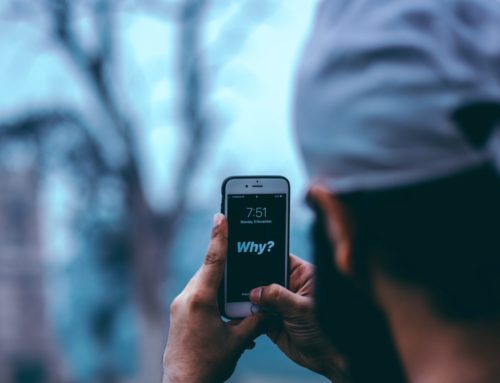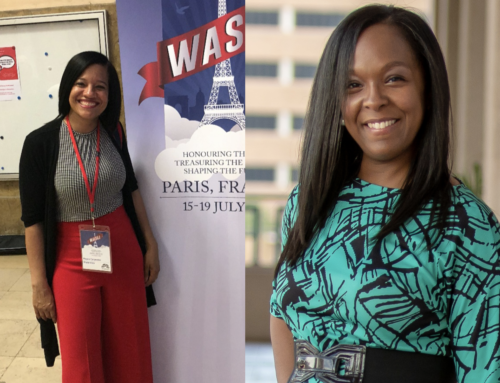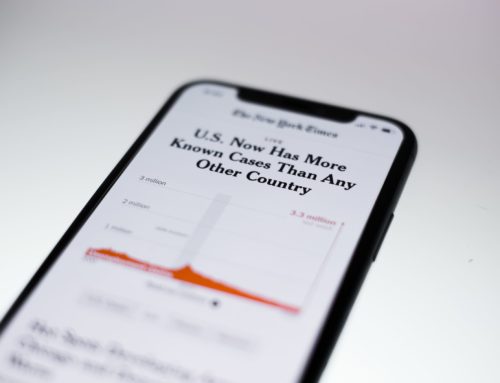How Social Entrepreneurship Can Create And Sustain Access at the Local Level
Kathleen O’Regan, NIC
Translated by: Rayni Plaster, CDI, SC:L
Originally written by Kathleen O’Regan, this article was shared with the Civic Access team for collaboration in the editing process. A huge thank you to Calene Carrano and Lauren Hooten for their efforts and for the synthesis of current industry data. Thank you also to Rayni Plaster for capturing the spirit of our intent in American Sign Language. The daily dedication of the entire Civic Access team and the trust and communication with our local deaf community make this model possible.
My “I” statements: I am a hearing interpreter. I did not grow up in the Deaf community…
I was welcomed and taught by patient and caring Deaf people who saw my potential to be an ally, and I will live doing my damndest to uphold the standards of allyship with the understanding that it can be taken away from me at any time. I make ignorant, oppressive mistakes every day, and I am grateful for those who are loyal and make me aware of where I slip. In heart, I am a humanitarian. In intellect, I am an innovative dreamer. In practice, I am a social entrepreneur. In spirituality, I am affected when others suffer. I recognize that being hearing in our society is an advantage; however, I can leverage the resources that I have access to and contribute to creating large-scale, transformational change by way of sharing those resources with our community. We all can.
Breaking New Ground: A Socially-Conscious Business Model
In 2014, I founded a social enterprise within the Community Access industry and committed ten percent of revenue earned through interpreting service provision to be invested back into the local community in the form of advocacy and education. Now embarking on our fifth year, we are a team of seven, full-time staff who sustain a communication access department and an advocacy department. We have quickly learned that although we are small, we are powerful in our ability to create local impact because we are working in solidarity with those we serve. Our advocacy department regularly surveys our local community asking where they would like the earmarked resources to be invested. By using this method, we have been able to identify key strengths and challenges within our community, allowing us to re-invest in these areas. The overarching goal of our method is to ensure high quality communication access is sustainable. Each community’s barriers to access will be different; therefore, staying connected and surveying the local community is vital to its sustainability and to fueling the social entrepreneurship spirit.
The prevailing business model in the Communication Access Industry has a significant economic impact at the executive management/ownership level of a company. All decisions of economic investment and hiring are made at the executive level. These decisions can have pernicious impact on the deaf community. Enter: Disruption. (1)
The Communication Access Industry: Urgent Need for Disruption
Social Entrepreneurship (SE) is trending up in regards to social equity and economic empowerment. The entrepreneurial sector of the business market is engaged in healthy discussion about what SE is, its powerful impact on society and local communities, and if there are drawbacks to this approach to business. Before clarifying the concept of SE, let us look at the conventional business model as this is likely familiar to the majority of the interpreting industry. A conventional business model is the way in which a company generates revenue and makes a profit from company operations. One main metric of a company’s success is gross profit (2) earned. After attending StreetLeverage Accelerate in 2016 (3), it became clear the conventional business model is used as a standard business model in the Communication Access Industry (ASL interpreting agencies, foreign language agencies, Video Relay Services (VRS) Companies, etc). In other words, the standard metric of success in the Communication Access Industry is monetary profit. One significant observation at StreetLeverage Accelerate was that the majority of communication access agency owners are not representatives of the deaf (4) community. This observation indicates that there is an opportunity to shift our metric of success to that of investment into systems that are in desperate need of economic power and resources to thrive (deaf education, access to resources, lobbying, creating employment opportunities, etc).
Our community is facing a critical moment in history as more and more Communication Access Industry entities continue to scale exponentially with limited involvement or investment in the deaf community.
Social justice conversations are at the forefront of sociological debate as deaf people continue to be identified as a commodity to be exploited for capital gain without respect to their cultural or linguistic diversity…
even as their diversity continues to rise (Cogen & Cokely, 2015). Deaf people and interpreters are breaking ground with such dialogue while the majority interest and control still holds strong. Can constructive forces partner to overcome destructive ones? How can we, as interpreters, historically accepted as “hearing members of the deaf community,” positively contribute to these constructive forces?
Martin & Osberg (2017) distinguish between an entrepreneur and a social entrepreneur in their article “Social Entrepreneurship: The Case for Definition.” The main difference they cite is that social entrepreneurship has the intention of “large-scale, transformational benefit that accrues either to a significant segment of society or to society at large.” In regards to the Communication Access Industry, this impact can be made from within our segment of society—the transformational benefit to deaf people accruing to society at large.
The Numbers, the Potential Impact and the How-to-Embark on Constructive Change
Yes—our company has been investing ten percent of our revenue back into creating and sustaining access where our community has identified a need. What does ten percent look like in our industry? Is this figure feasible to invest and contribute to constructive change-making efforts? Let’s play with a few numbers.
Looking at the industry players who have federal contracts, a quick search on ISI Federal reveals that of the top 50 companies who provide interpreting and translation services to the federal government, there are seven top-earning companies directly engaged in ASL interpreting service provision (5). The total annual revenue of these seven companies amounts to $26,542,447. Ten percent of revenue earned is $2.65 million dollars.
- What impact would $2.65 million dollars have in creating large-scale, transformational benefit to our community? Where do we as a community need to invest?
- Let us add in the three more identifiable VRS companies (not deaf-owned) (6) whose estimated revenue can be accessed via online sources. The total estimated revenue for these top three companies is to the tune of $585.33 million dollars.
- Consider the transformational benefit of investing ten percent – $61.18 million dollars – in our community. How could we leverage those resources to constructively contribute to our community?
Below is a visual to illustrate what a ten percent impact could do for our community. After taking a rough sampling of 50 nonprofit organizations that have the word “deaf” in the organizational name (7), this graph shows the total budgets of all 50 nonprofit organizations in comparison to the potential $61.18 million dollars of ten percent contributions.
(8) As you can see, this ten percent “potential investment” by the seven top-earning companies directly engaged in ASL interpreting service provision to the federal government and the most identifiable VRS companies well exceeds the budgets of 50 deaf-centric organizations, including our National Association of the Deaf. There is still money to spare and to re-invest in causes and efforts that raise our community’s capital. We have yet to maximize the potential of positive, large-scale, transformational benefit to our Deaf Ecosystem.
If you are currently in the business of communication access, I encourage you to take a look at your budget and at the community, or communities, you serve. Ask the question: Where could I repurpose funds to address local barriers experienced by the people we serve? Then, ask the people you serve. If you could start with a percentage and commit to increasing it over time, where does your community want to see improvements? Local community events with no ADA budget? Deaf Self Advocacy Trainings? (9) After-school programming for deaf children? Health education? Sponsored family events? Yoga classes? Public education? Social media, Survey Monkey, and YouTube videos are powerful tools. Create a simple survey, make a video, and send it out to your local community. Better yet, attend a community event, say hello, and hand out the survey in person.
If you are not in the business of communication access but you are considering, be mindful of how urgently we need more industry players who are invested in creating transformational change at the local level. I encourage you to be a part of that change. The intent of this model is entirely to benefit our community and to invest in our community and its success by supporting them in growing their deaf economic power. Companies whose genuine and transparent motivations are geared toward the benefit of the community will experience the fruitful outcome of our community’s re-engaged trust.
How Our Decisions Lead, Provide, and Sustain Access Impact in our Community
It is clear that the Communication Access Industry has money-making power. It is also clear that the demand for interpreting services is increasing dramatically. There is a severe shortage in the number of interpreters available to fill the growing need for interpreting services within the community (Cogen & Cokely, 2015). In 2018, the Bureau of Labor Statistics indicated an eighteen percent increased demand for interpreters, well above the average for any other career.
There is also a clear trend in some geographic areas where hiring entities, per procurement policies and procedures, are engaging in more contracts with agencies rather than independent contractors. Oftentimes, these agencies are national-level and/or foreign language agencies whose gross income is not re-invested back into the local deaf community. The Communication Access Industry is trending toward making a single agreement with an agency who can handle large-scale coordination of services; this will continue to put more focus on monetary profits and less on the people served which is detrimental to meaningful investment within our local communities.
The above discussion is directed toward traditional agencies, as they are the ones with healthy profit margins. This was not intended to encourage an increase for individual interpreters’ rates. Local rates impact access, and it’s imperative we all remain conscious of that effect. When we as interpreters raise our rates, the agencies raise theirs too. This can result in access being cost prohibitive and therefore cause further barriers for deaf people at the local level. We all, as interpreters, have the power to work for agencies that are socially-conscious and engaged in large-scale, transformational benefit to our community. Let us never forget, we would not have a legally-mandated, secure job without deaf people. And agencies, let us never forget that either.
It is time to redirect our focus to access at the local level and, as allies and partners, invest in creating access to more resources for which our current system is failing. We have the power to shift this trend. Not only do we have the power to shift this trend, I would argue we have a moral obligation to do so. This shift is not easy; this is and will be messy. Ask your local community: what barriers are you facing? Then, invest resources into breaking those down. Be local community partners have faith to know that the money always comes – the market is clearly healthy. Remember, “We rise together.” Be patient. Look beyond self. Realize you have the power to influence change on a local level.
Footnotes
(1) Trigger warning: the following sections may spark some threat to those in a position of control in the current market of communication access. I simply ask you to notice the defenses that come to the forefront, and set them aside as you continue to read. This is not a request to relinquish control, but rather an opportunity to consider how you can harness that control to invest in that which will make a positive, constructive impact for our community.
(2) Investopedia, http://www.investopedia.com/terms/b/businessmodel.asp
(3) Accelerate 2015 was a pioneering conference for Sign Language Interpreting Agency owners to gather and learn about the current industry standards and practices.
(4) The National Deaf Center (NDC) is using the term deaf in an all-inclusive manner, to include people who may identify as Deaf, deaf, deafblind, deafdisabled, hard of hearing, late-deafened, and hearing impaired. NDC recognizes that for many individuals, identity is fluid and can change over time or with setting. NDC has chosen to use one term, deaf, with the goal of recognizing experiences that are shared by all members of our diverse communities while also honoring all of our differences, https://www.nationaldeafcenter.org/about-us
(5) It is unclear how many of the other companies listed are engaged in ASL service provision under the auspices of foreign language translating titles.
(6) I recognize that a company being deaf-owned does not assume that this model of social investment is a reality. However, deaf-owned companies are part of the Deaf Ecosystem. Kelby Brick, Director of Maryland’s Office of Deaf and Hard of Hearing states, “Ultimately, a strong Deaf Ecosystem will lead to increased social and economic clout from the retention and expansion of jobs, resources, and wealth within the Deaf and hard of hearing community. The community’s increased influence is leveraged to support the community in turn, creating a synergistic effect. The synergy leads to more healthy, productive, and empowered Deaf and hard of hearing citizens. Social, political, and economic barriers no longer stand in the way and discrimination is eradicated.” http://odhh.maryland.gov/deaf-ecosystem/
(7) This search of organizations and the 990 filing budgets came from www.foundationcenter.org. The sampling focused on deaf organizations, and organizations that had majority hearing membership were intentionally excluded.
(8) List of 50 nonprofit organizations used for budget/revenue comparison chart (listed from A-Z): Abused Deaf Women’s Advocacy Services, American Society for Deaf Children, Aspen Camp for the Deaf and Hard of Hearing, Bay Area coalition of Deaf Senior Citizens, Cleary Foundation for the Deaf, D.E.A.F. Inc., DAWN, DE LEPEE Deaf Center, Deaf Action Center (TX), Deaf and Hard of Hearing in Government Inc., Deaf Centers of Nevada, Deaf Community Advocacy Network, Deaf Empowerment Awareness Foundation Inc., Deaf Harbor, Deaf Inc., Deaf Initiatives Inc., Deaf Plus Adult Community Inc., Deaf Prison Ministries Network, Deaf Reach Housing Inc., Deaf Reach, Inc., Deaf Unity, Deaf West Theatre Company, Deaf Women Against Violence Everywhere, Deaf Youth Sports Festival, Discovering Deaf Worlds, DOVE Advocacy Services for Abused Deaf Women and Children, Foundation for Deaf Education, Genevieve E. Dunkman Trust for The Central Institute for the Deaf, Greater Cincinnati Deaf Club Inc., Home – Deaf Single Mothers Gallaudet Housing Fund, International Catholic Deaf Association- US Section, Lions of Canv Wilderness Camp for Deaf Children Inc., Mahoning Valley Association of the Deaf, Mark Seven Deaf Foundation, Minnesota Deaf Campers, National Association of the Deaf, National Black Deaf Advocates Inc., National Family Association for DeafBlind, National Theater of the Deaf, New England Home for the Deaf, New Jersey Deaf Awareness Week, New York Deaf Theatre Ltd., NJ Deaf News Inc., Project Deaf India, Rochester Recreation Club for the Deaf Inc., San Francisco Deaf Club, Staten Island Club of the Deaf, Telecommunications for the Deaf, Inc., USA Deaf Sports Federation
(9) Deaf Self Advocacy Training (DSAT) curriculum was developed as a part of an RSA funded grant out of the Northeastern University’s National Interpreter Education Center (NIEC). The curriculum is free to anyone upon request and accessible on the website. It is important to emphasize that “this initiative promulgates an ‘…of, by, and for the deaf, hard of hearing, and/or DeafBlind” philosophy in all aspects of its programming. The DSAT curriculum was developed by individuals who are deaf, hard of hearing or DeafBlind and designed as a peer-led training’” (NAD Website, 2018). This is critical to sustain this intention to keep this as deaf, hard of hearing and DeafBlind space to ensure the effectiveness of the program.
References
Bureau of Labor Statistics Summary. (2018, April 25). Retrieved August 28, 2018, from https://www.bls.gov/ooh/media-and-communication/interpreters-and-translators.htm
Cogen, C., & Cokely, D. (2015). Preparing interpreters for tomorrow: Report on a study of emerging trends in interpreting and implications for interpreter education. Retrieved from https://rid.org/niec-reportpreparing-interpreters-for-tomorrow
Deaf Self-Advocacy Training. (2017, January 10). Retrieved from https://www.nad.org/dsat/
Martin, R. L., & Osberg, S. (2017). Social Entrepreneurship: The Case for Definition (SSIR). Retrieved April 15, 2017, from https://ssir.org/articles/entry/social_entrepreneurship_the_case_for_definition
StreetLeverage | Accelerate Conference (2016, January 29-31).
 Kathleen O’Regan, NIC is the President of Civic Access, a social enterprise that leverages its economic power to invest in local Deaf Community efforts, access and programming. She grew up in the green mountains of Vermont where she learned American Sign Language from local Deaf students. She is a graduate of Northeastern University’s Interpreter Education Program and holds a Master’s degree in Social Impact from Claremont Lincoln University. After a decade of coordinating interpreting services at the post-secondary level, Kate dedicated herself to providing reputable, accessible Deaf-centric services by listening to and working directly with Deaf consumers. Kate lives in Charlottesville, Virginia with her three energetic children and enjoys taking advantage of all the Virginia countryside has to offer, while continuing her love of learning and staying active.
Kathleen O’Regan, NIC is the President of Civic Access, a social enterprise that leverages its economic power to invest in local Deaf Community efforts, access and programming. She grew up in the green mountains of Vermont where she learned American Sign Language from local Deaf students. She is a graduate of Northeastern University’s Interpreter Education Program and holds a Master’s degree in Social Impact from Claremont Lincoln University. After a decade of coordinating interpreting services at the post-secondary level, Kate dedicated herself to providing reputable, accessible Deaf-centric services by listening to and working directly with Deaf consumers. Kate lives in Charlottesville, Virginia with her three energetic children and enjoys taking advantage of all the Virginia countryside has to offer, while continuing her love of learning and staying active.








Leave A Comment
You must be logged in to post a comment.